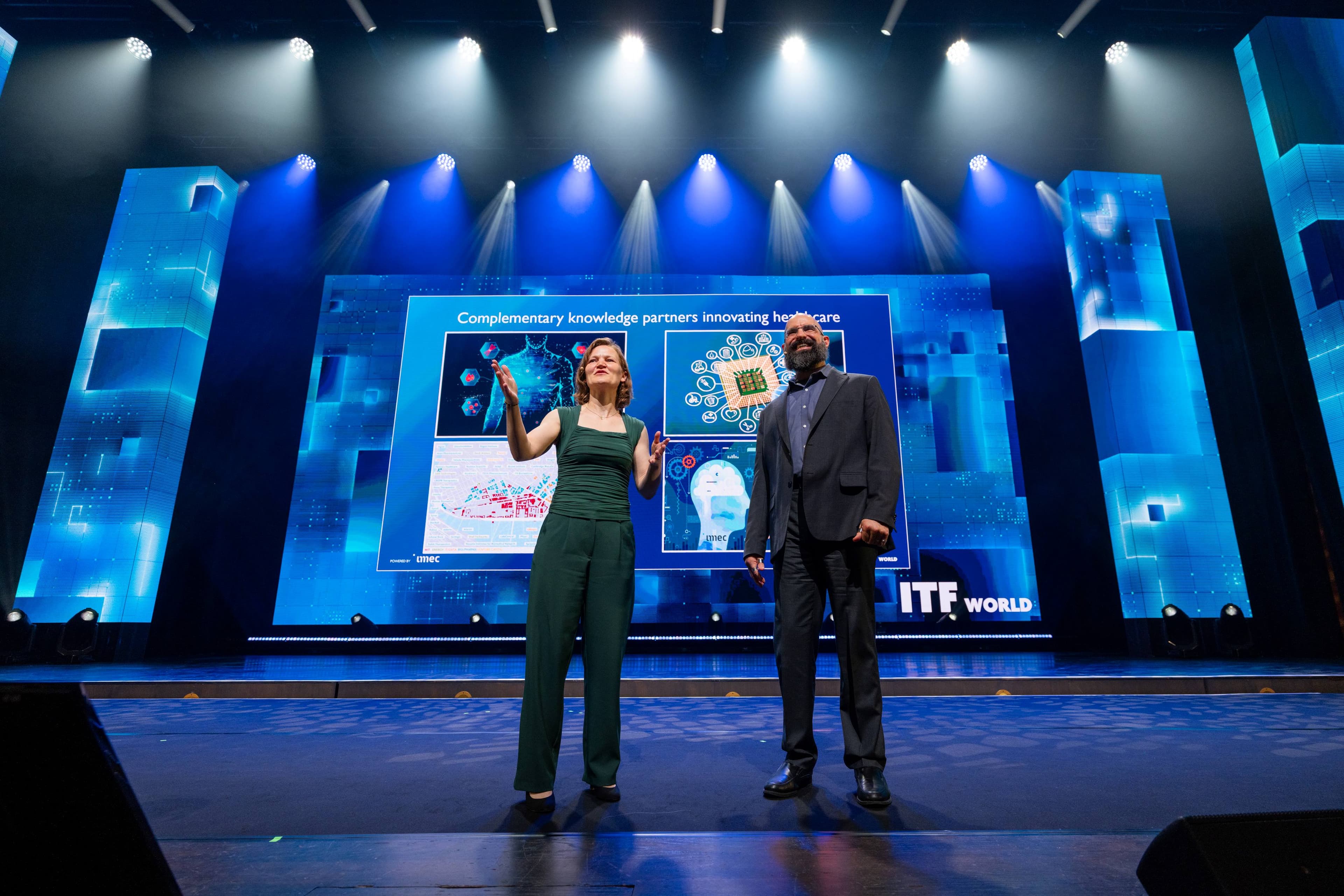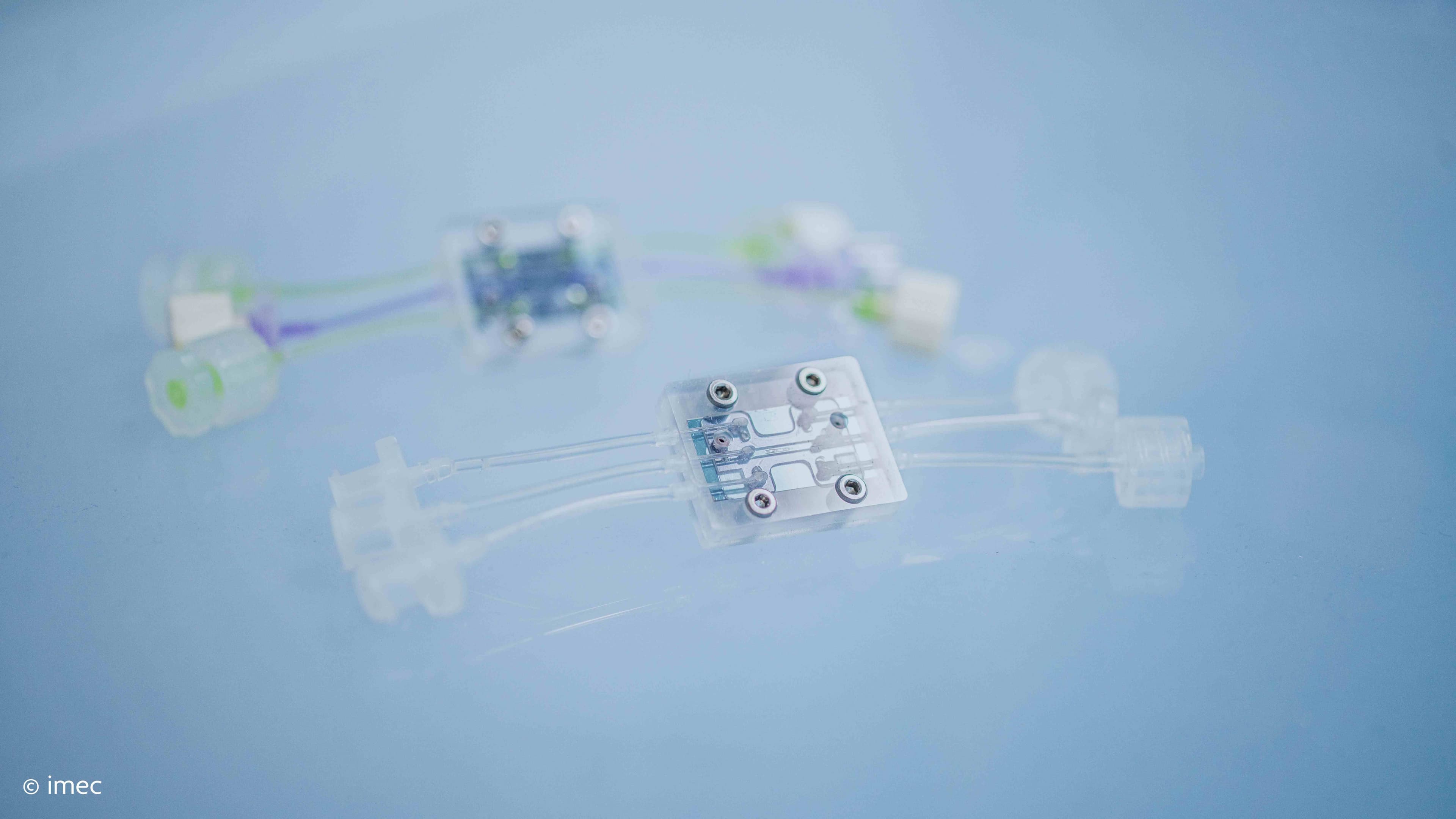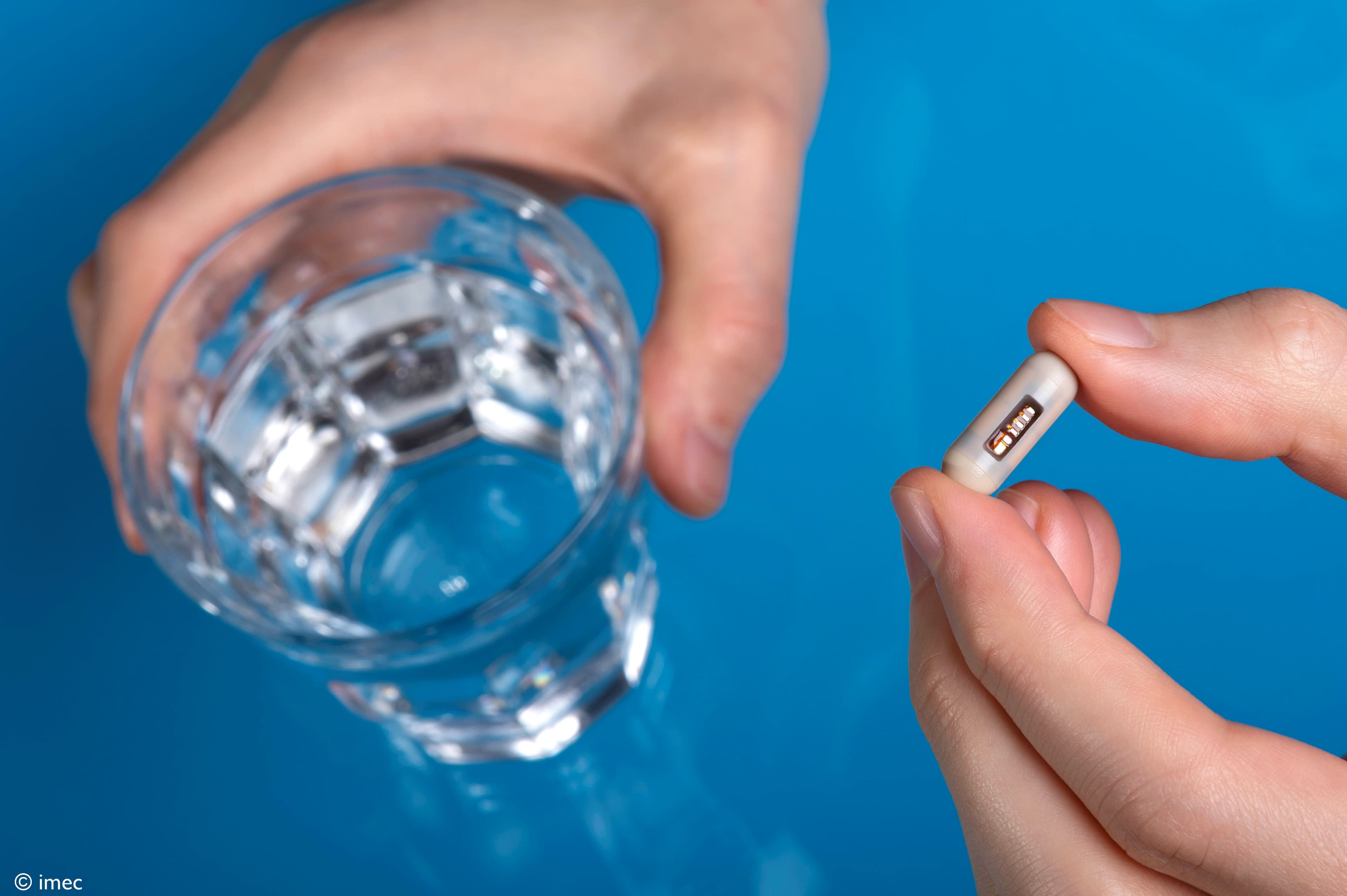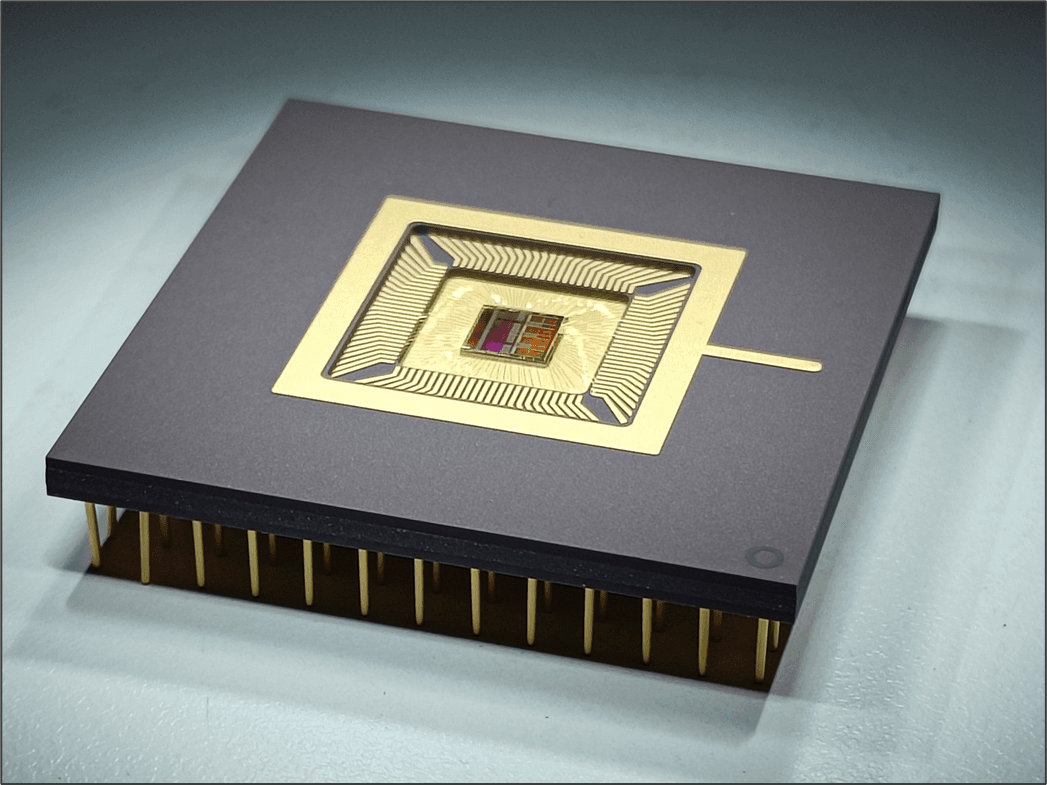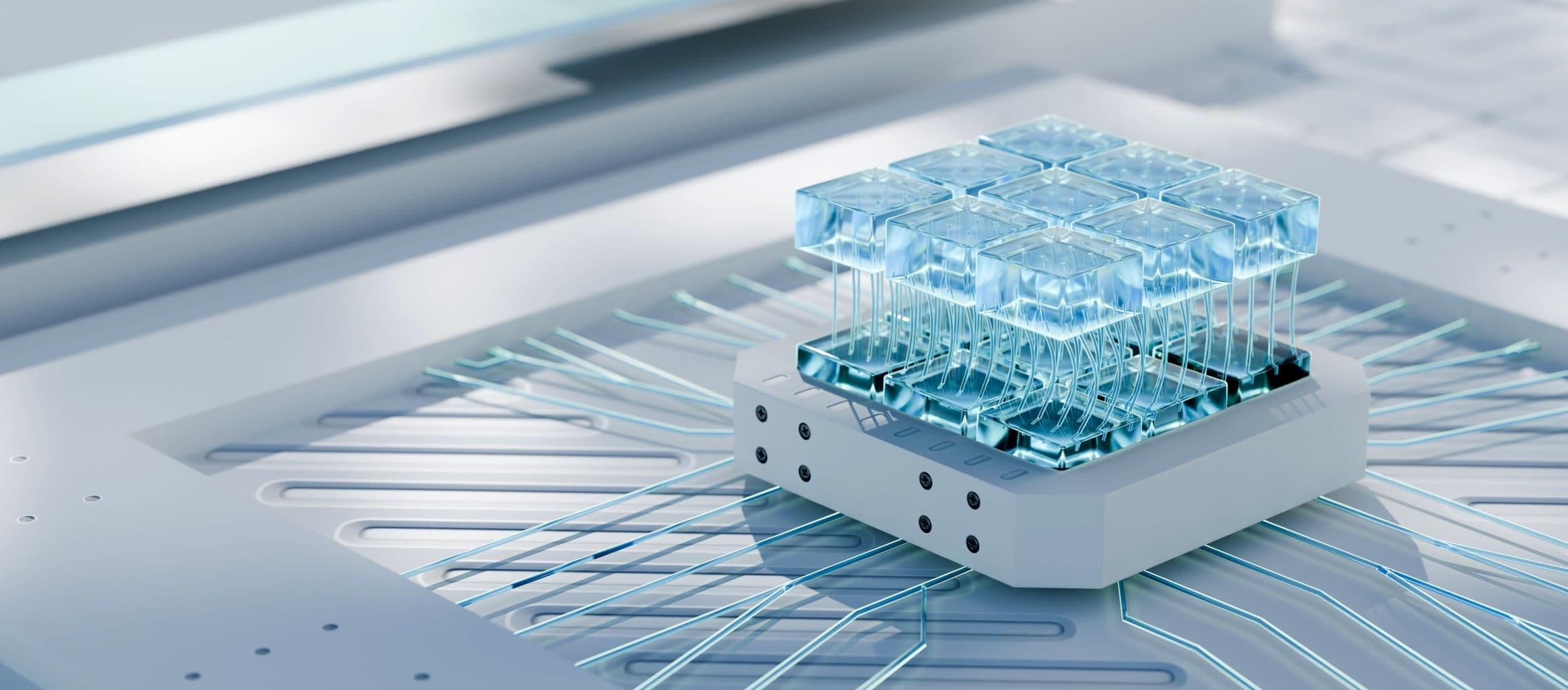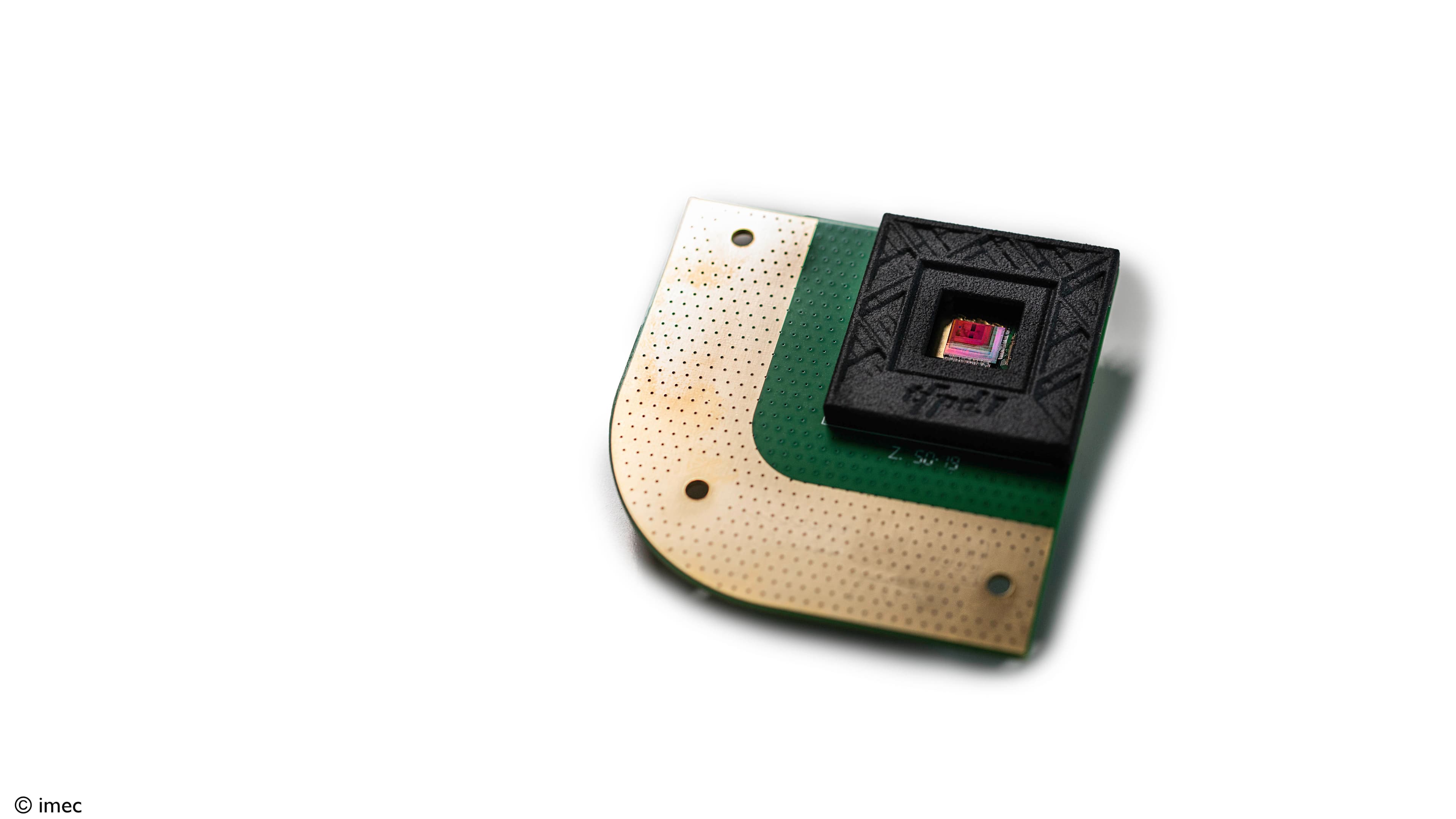Yesse (|jes|Technologies, until last month known as MouSensor, is on its way to unleash a revolution in the fragrance and diagnostics industries. If all goes to plan, it can soon integrate human scent receptors (or those of any mammal) onto a computer chip for electronic readout. Thus, unraveling one of the greatest biological mysteries: that of the sense of smell. Both in the fragrance and perfume sectors and in medical diagnostics, there are huge markets for this. Currently Yesse Technologies expects the first tape-out of a chip designed by imec to apply and activate odorant receptors. If Yesse Technologies succeeds in its ambition, the American-Belgian startup awaits an exciting and prosperous future. There is certainly no lack of passion and knowledge. Founder and CEO Charlotte D’Hulst and managing director for Europe Elke Giets guide us through the past, present and future of their disruptive company.
Joy Milne, a Scottish woman, made world news at the end of 2017 when doctors realized she can recognize Parkinson's at an early stage through the body odor of patients. Also, dogs are known to smell certain forms of cancer. These are just two examples that justify the medical world to see a revival for diagnostics via scent.
The more traditional world of scents, for example for perfumes and beauty products, also still faces major challenges. Almost the entire industry is based on the expertise of a few hundred scent experts, called "noses". A well-paid job that to date cannot be objectively analyzed or automated.
The scent is therefore one of the last great sensory mysteries. We know more about our genes - genomics - than about how our sense of smell works. It challenged Charlotte D’Hulst to change that from an early stage in her career. Together with professor Paul Feinstein, her research partner and expert in the molecular biology of the sense of smell, she devoted her postdoc at the Hunter College of The City University of New York to unravel the sense of smell. A domain they would later name odoromics. After years of fundamental research, it led to the founding of their own company. Originally MouSensor and recently renamed Yesse Technologies (powerfully pronounced as Yes!).
MouSensors: factories for odor receptors
At the basis of the company lies the unique expertise to be able to produce any biological odorant receptor in the nose of laboratory mice: MouSensors.
In 1991, American researchers Richard Axel and Linda Buck identified the genes that define more than a thousand different scent receptors in mice and about three hundred in humans. A breakthrough for which they received the Nobel Prize for medicine in 2004. It’s these and other insights that will enable Yesse Technologies - using its patented genetic platform - to copy human odor detection into the noses of the MouSensors.
In 2016, Charlotte D'Hulst and her colleagues published in Cell Reports how they have engineered the nose of a mouse to produce large aounts of any mammalian odorant receptor. And this without losing their functionality. It’s as if the nose of the mouse becomes a bioreactor for odor receptors.
The modularity of the technology is the greatest strength of the Orion21TM platform: the brand name under which Yesse Technologies is protecting its technology. Referring to the star constellation Orion (The Hunter) and an acknowledgement to Hunter College where the technology was invented. It opens the possibility to copy all human scent receptors for the first time in their natural environment, the nose.
From in vivo to ex vivo
The question remains of course: how will mice (MouSensors) tell you which odor they detect? Based on the vast expertise of co-founder professor Paul Feinstein, the team developed a concept to translate the biology into an ex vivo platform and activate the receptors - created by the MouSensors - in 96-well plates. This way, multiple samples with biological odor receptors can be tested on their response to various odors. The microtiter plates are the standard in the industry to efficiently perform all kinds of tests and therefore an important step to enable industrial applications at all.
In parallel, Charlotte D’Hulst and her colleagues also made the transition from fundamental research to entrepreneurship. Driven by a growing New York startup climate for biotech, Yesse Technologies was able to secure its first grant in 2017 from the National Science Foundation (NSF), a very competitive foundation in the US. With just over two hundred thousand dollars from NSF, they managed to translate their ex vivo concept into a working proof-of-concept.
At the same time, the project was also supported by the Michael J. Fox Foundation, which invests in research to cure Parkinson's disease.
The Belgian connection: imec and VLAIO
It was at the same time that the connection with Belgium was established. Thanks to BioVox and LinkedIn, Yesse Technologies and imec became aware of each other's existence. And it soon became clear that they had a lot to offer each other. Around that time, imec was working on multi-electrode arrays for cell and tissue engineering. A large part of the missing knowledge to make this successful in the field of olfaction was precisely the expertise of Yesse Technologies.
The collaboration with Yesse Technologies was therefore very welcome in the imec life-sciences research. Conversely, imec could play a role in the further development of Yesse Technologies by providing the silicon interface to integrate the Orion21™ biology. Early in the process, imec.xpand became involved, a fund that invests in start-ups where imec technology and expertise make the difference.
"The stars aligned," in the words of Charlotte D'Hulst. "Imec.xpand is a real seed fund that invests at a very early stage when many risks are still at play. Many funds claim this, but don't really do it. The concept of imec.xpand is also very well devised. First, they make a small investment for six months, a so-called Venture Timebox. This gives you the time and resources to tackle the biggest risk factors. They also actively contribute with ideas about your intellectual property and technology development. Six months is very short in biotech, almost like a speed date. But after that, you get married immediately.”
During the successful six months, imec also helped to attract a research and development grant from VLAIO, the Flemish Agency for Innovation and Entrepreneurship. It is then summer 2018 and the moment when Elke Giets switches from her venture development manager role at imec to becoming managing director of the Belgian subsidiary of Yesse Technologies. Elke Giets: "I knew the case very well, because I supervised it at imec venturing. When Charlotte asked me to lead the operations in Europe, I thought it was time to take the dive into entrepreneurship myself. It is a leap of faith, but one that’s very close to the passion I also found in my bio-engineering studies: translating research into relevant applications.”
Thanks to the financial support from VLAIO and imec.xpand, Yesse Technologies was able to shift in higher gear. Before the end of the year, it closed an investment round of $3.3 million, led by imec.xpand and Alexandria Ventures (U.S.) and followed by New York Ventures (the investment arm of the State of New York).
Towards a system-on-chip
Today, Yesse Technologies has four full-time employees and has an open job opportunity for a system engineer to strengthen the team in Belgium. Not included are the large number of people at imec and the academic lab in New York City, an important collaborator for Yesse Technologies. Charlotte D’Hulst: "The motivation and commitment that I experience with our partners remains essential to making our story a success."
The most important milestone is now to design and develop a scalable and market-ready product. For this, the existing ex vivo technology on 96-well plates must be converted into a system-on-chip.
Such miniaturization also minimizes the need for mice as bioreactors for the production of odor sensors. This chip becomes a basis on which Yesse Technologies can apply, activate and read biological material with odor receptors. A working proof-of-concept on non-optimized pieces of silicon is already in place, which provided the motivation for designing a dedicated and proprietary chip.
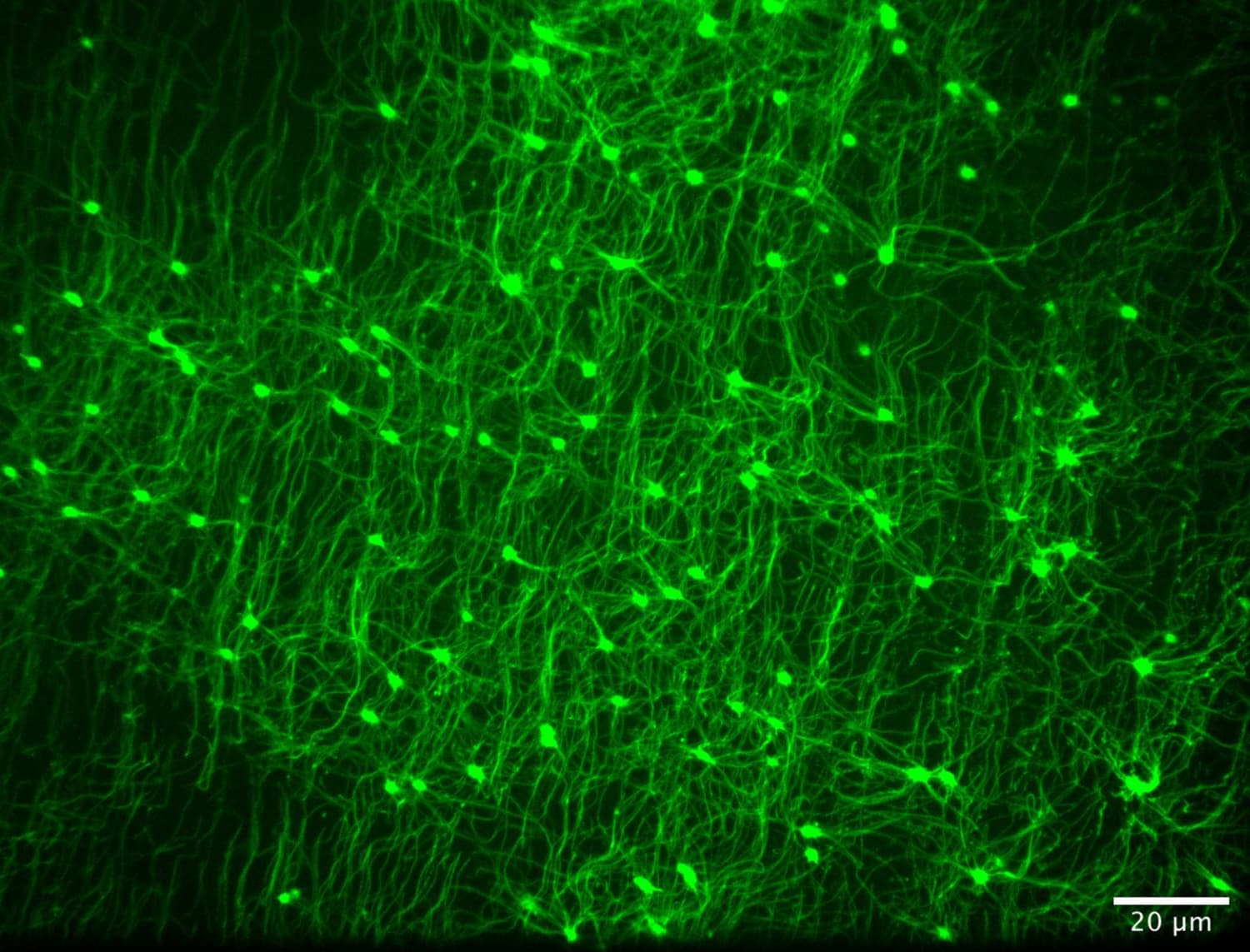
Yesse Technologies combines the biology of the olfactory system – shown here through fluorescent markers and the Orion21™ genetic platform – with imec’s nanotechnology, allowing for an optical read-out of receptor activation.
A development in which the expertise of imec plays a crucial role. Elke Giets: "The imec team led by Dries Braeken, within the Life Sciences group, has always responded flexibly to our questions and advancing insights and really goes to extremes for our challenging project. A beautiful interplay of different disciplines, also within imec, has led us to come up with a first chip design in only three months’ time. An important contribution to this was made by Ben Jones, IC designer in the microfluidics team at imec. We are now eagerly awaiting the tape-out.”
With the lessons Yesse Technologies can learn from these first tests, it plans a new chip design and tape-out for 2020. Another important milestone, because then, for the first time in history, they will be able to have biological receptors on a computer chip react to relevant smells, with the precision of a real human nose. And then the road to the market is open.
From prototype to product
That is why, in parallel to further technology development, Yesse Technologies is also taking steps in the development from prototype to end product. For example: what will the housing look like in which the chip will be placed and what will the user interaction be like? Or how will you read and display the results? In short, how do all the pieces of the puzzle fit together?
To this end, it works closely with the Belgian company Verhaert, a product development agency specialized in translating complex technology into a market-ready solution. An expertise that it gained in translating space technology into earthly applications. Steps are also being taken in further business development.
Charlotte D’Hulst: “We know what sectors we want to focus on and which ones not (yet). We currently see the highest needs in Fragrance & Flavor and diagnostics. Our current (off-chip) solutions already allow us to make a difference there in the short term. Other markets will only be a possible match later. We also know that we do not want to become the next diagnostic company or fragrance producer. We see ourselves as a partner who can offer a technological platform to existing players in the industry. ”
Remove the no from nose
The full market launch is likely only to be realistic after 2023. In the much shorter term, however, the first commercial revenues are already planned, by offering targeted services based on the current knowledge and technology. And this new impulse also asked for a new name. The company is now convinced that it can offer a positive answer to the many mysteries in odoromics. And hence the logical choice to replace the 'no' in 'nose' with a convinced 'yes'.
Want to know more?
- The homepage of Yesse Technologies gives more details about the company and – at the time of publication of this article – features an interesting position for a system engineer.
- End 2018, Yesse Technologies got broad media coverage when it secured a $3,3M investment round (at the time still named MouSensor).
- Read more about the imec expertise in life-sciences.

About Charlotte D’Hulst
Charlotte D'Hulst, PhD is the Co-Founder and CEO of Yesse Technologies, Inc., a venture-backed biotech start-up headquartered at the Alexandria Center for Life Sciences in New York City. Charlotte pioneered the Orion21™ platform, which forms the core of the company, while working on the molecular biology of the enigmatic sense of smell with Prof. Feinstein at Hunter College of The City University of New York (US). Charlotte was trained in bioengineering at the KULeuven (Belgium) and received her PhD in Biomedical Sciences from the University of Antwerp (Belgium).
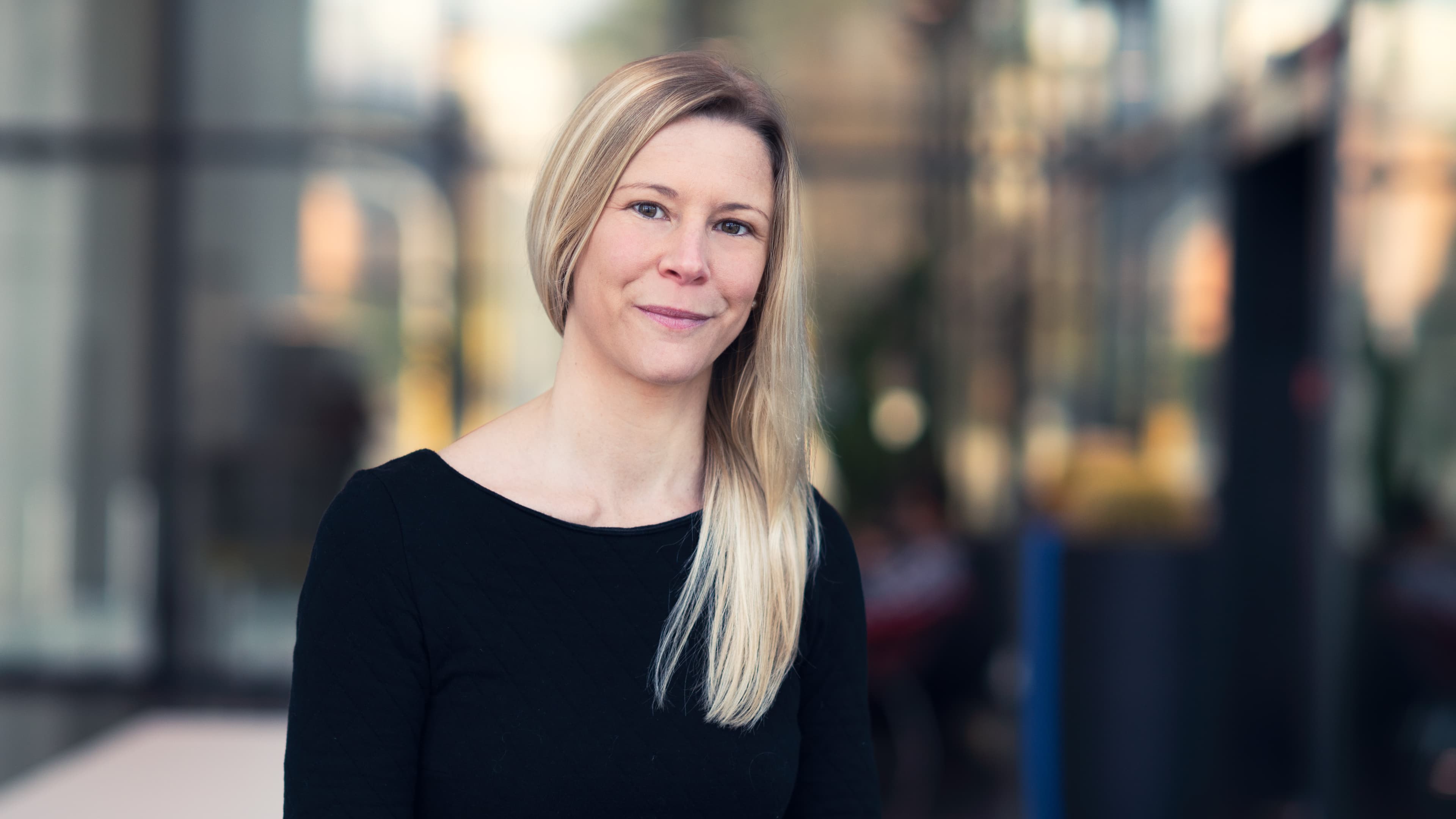
About Elke Giets
Bitten by technology and passionate by the biology of things, Elke Giets, PhD, thrives on the translation point of science and technology into applications. Cellular and genetic bioengineer by formation,
Elke completed a PhD in immunology at the Catholic University of Leuven (Belgium). After academia, Elke joined the clinical division of a leading 3D-printing company (Belgium) and gained experience in various business aspects of Life Science industry during a management consultancy role (Belgium & Switzerland). Prior to joining Yesse Technologies as the managing director for Europe, Elke was part of the venturing team at a world-leading semiconductor research center, imec (Belgium).
Published on:
2 April 2019




